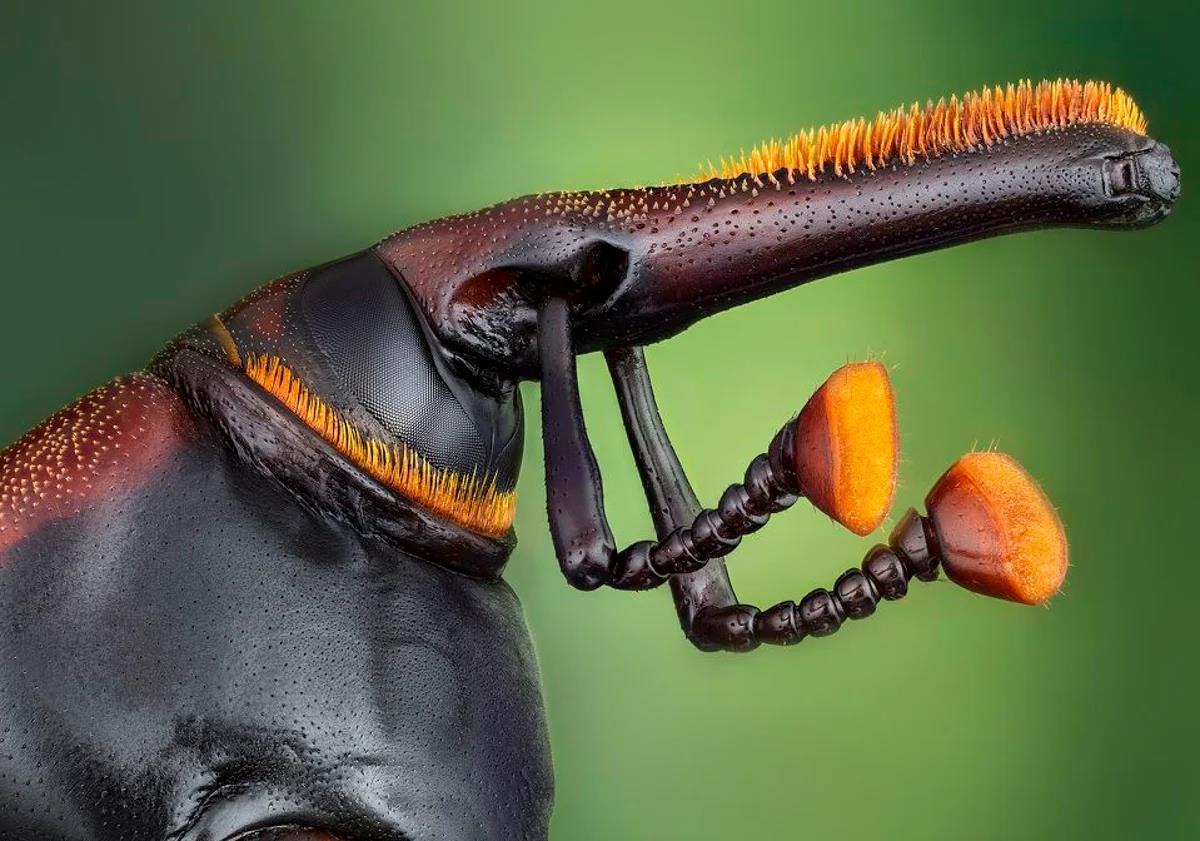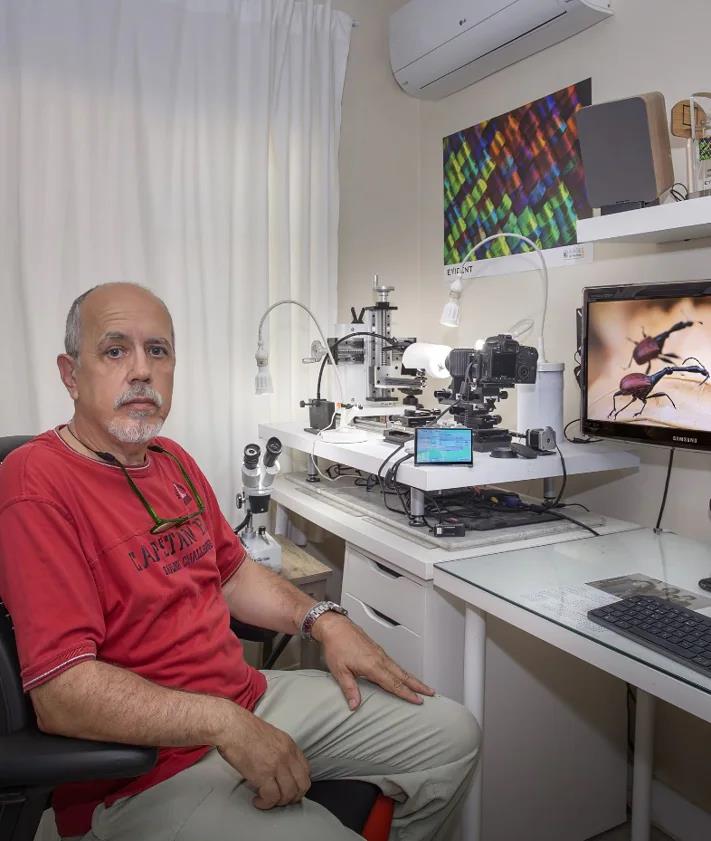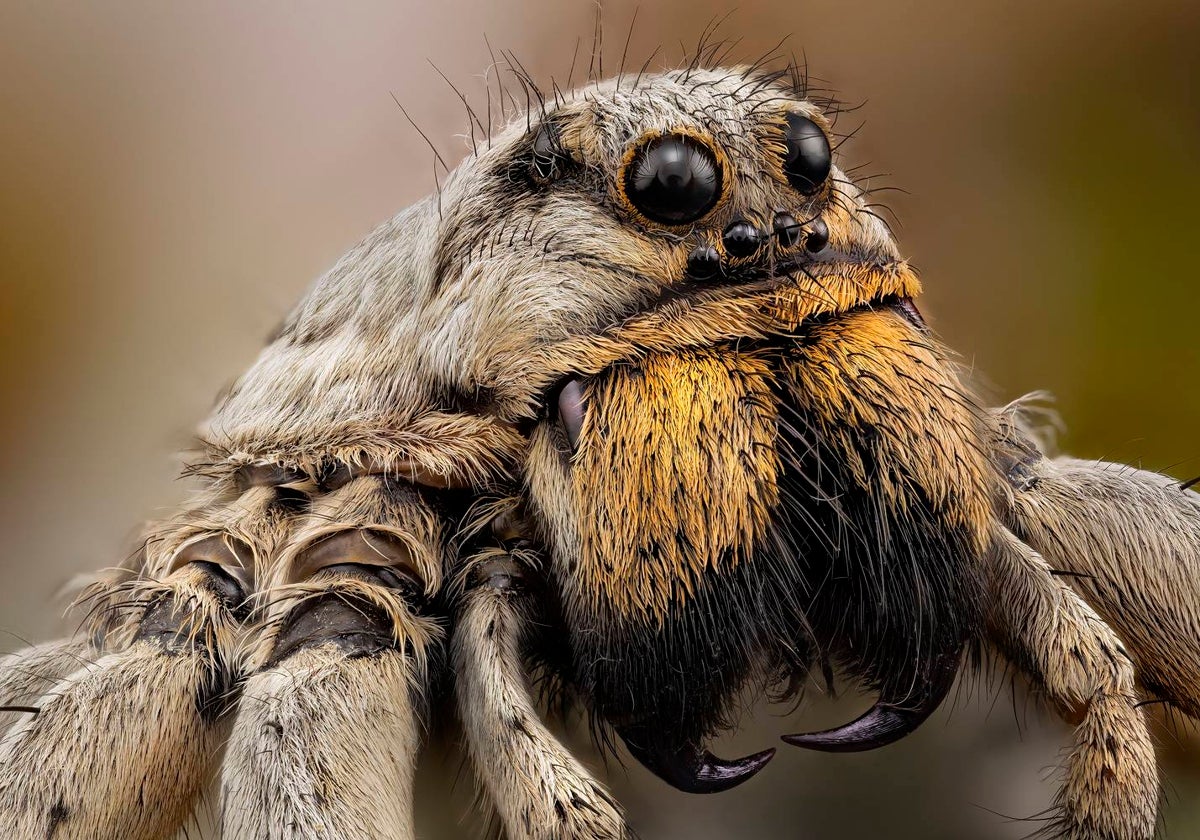The award-winning monstrous images of insects taken by a Malaga photographer
Javier Rupérez, who works as secretary of Almáchar town hall, has won his fifth best extreme macro photographer award in one of the most prestigious competitions in the world
At 63 years of age, Javier Rupérez has spent more than half his life working as a secretary in the town hall of Almáchar in the Axarquía on the eastern side of Malaga province. Although when he was younger he wanted to study Fine Arts at the Escuela de San Fernando in Madrid, he did not manage to pass the entrance exam, so he opted to study Law and later became a civil servant. However, he has kept his passion for art and in particular photography.
After many years capturing images of landscapes using the conventional techniques, a little over a decade ago Rupérez discovered the extreme macro of insects "and I fell in love with it" he says.
Although he is originally from Madrid, Javier has lived in Malaga province for 40 years and feels like "just another Malaga native". He has a studio in his home in Caleta de Vélez (Vélez-Málaga) where he works on the 'monstrous' images he obtains with this peculiar technique that consists of increasing the size of insects by thousands of times.
The images show the beauty of small creatures including spiders, beetles, flies, butterflies, bees and wasps, among others. "I'm passionate about it, above all, so that people can see what these living beings with which we coexist are really like, with eyes, hairs, although at microscopic levels of size," says Rupérez, who shares much of his work on his website and on social media such as Instagram and Facebook.
SUR first reported on the spectacular photographs of Javier Rupérez in the summer of 2017 in a report that made the front page of the newspaper. At the time, he had only been doing the hobby for five years, but he had already taken some of his most iconic images. Since then, the photographer from Axarquía has won dozens of awards in prestigious international competitions, from brands such as Nikon and Olympus and his images have been published in media all over the world.
More than 30,300 photographers from 162 countries
In 2024 he has been recognised, for the fifth consecutive year, as the best in the world in the extreme macro category in the most prestigious international competition: the Annual International Photography Awards, organised in Russia, in which more than 30,300 photographers, both professionals and amateurs, from 162 countries participate. This year eight of his photos have been among the hundred best in the category of extreme macro , being the author with the most award-winning snapshots.
"It has no prize money, but due to the large number of participants it is the most recognised competition, as more than 400,000 photos from more than 100,000 photographers from almost 170 countries participate," explains Rupérez.
He insists that his work is "purely for fun", to disseminate and publicise the majesty of the animal kingdom and the curious forms that these tiny living beings have. Among his most recognised images are one of a red weevil, a jumping spider, a common fly and beetles from the Philippines.



In terms of his method, Rupérez says that each image takes dozens of hours of work, as he has to assemble them, stacking them layer by layer, with various computer programmes. He estimates that over the years he has taken around 800 images of insects, but for each one he has had to take more than 3,000 shots. "It's a complicated technical process, you have to position the animals very well, have a lot of patience and go little by little," he explains.
Artificial intelligence has of course started to catch up with the technique used by Javier but he says that the images he has seen taken with this technology "contain flaws". He adds that most people might not notice but "not those of us who have been using it for years. There are extra legs, or eyes, they are not real images".
The insects he photographs are taken from their natural environment, "although I don't go around killing bugs," he says. However, the most important collection he has is of beetles, most of them acquired in other countries. "The investment I must have made in equipment is around 8,000 euros, but that's because it is second-hand," he says.
His work has been published in prestigious publications, such as 'The Science of Animals: Inside their Secret World', published in 2019 by the Natural History Museum in London.
Two years ago Javier took part in a project for the invertebrate pavilion at Barcelona Zoo with the company Explainers Group. Popularising insects is what he enjoys most about his hobby. "People see insects as annoying and they don't know how important they are for ecosystems, nor do they imagine what they are really like," Javier argues and points out that "there are fewer and fewer insects. You can clearly see that on the bumpers and windscreens of cars, they don't get so dirty any more".

